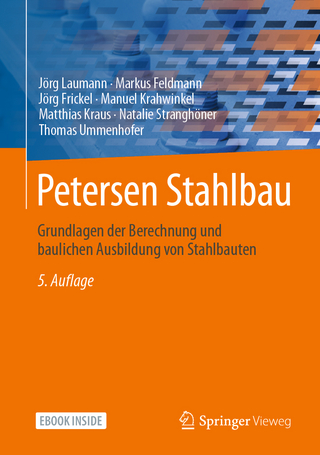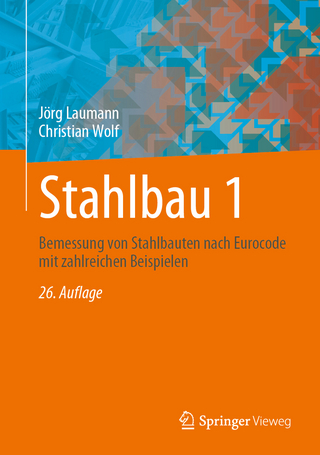
Energy Efficiency and Historic Buildings
Application of Part L of the Building Regulations to Historic and Traditionally Constructed Buildings
Seiten
2017
Historic England (Verlag)
978-1-84802-520-2 (ISBN)
Historic England (Verlag)
978-1-84802-520-2 (ISBN)
- Titel ist leider vergriffen;
keine Neuauflage - Artikel merken
Historic England supports the Government’s aims to improve the energy efficiency of existing buildings through Part L of the Building Regulations. Many improvements can be carried out, often at a relatively low cost, significantly enhancing the comfort of the building for its users, as well as providing savings on fuel bills and helping to meet greenhouse gas emission reduction targets. Improving energy and carbon performance may also give a welcome opportunity to protect and enhance a historic building and ensure that it remains viable into the future.
For historic buildings a balance needs to be achieved between improving energy efficiency and avoiding damage both to the significance of the building and its fabric. Taking a ‘whole building approach’ can achieve significant improvements in most cases, although not always to the standards recommended in the Regulations. Achieving an appropriate balance requires an understanding of the Regulations and the building, particularly the point at which alteration to the building’s character and significance becomes unacceptable.
The Building Regulations Approved Documents for Part L make it clear that a reasonable compromise on the energy efficiency targets may be acceptable in order to preserve character and appearance and to avoid technical risks. They do this by specifically including some ‘exemptions’ and circumstances where ‘special considerations’ apply for historic buildings and those of traditional construction.
The guidance has been produced to help prevent conflicts between energy efficiency requirements in Part L of the Building Regulations and the conservation of historic and traditionally constructed buildings. It also provides strategic advice on implementing measures, highlighting the various stages and issues that need to be considered when reducing energy use and thermally upgrading existing buildings.
The advice also acts as ‘second tier’ supporting guidance in the interpretation of the Building Regulations (referred to in paragraph 3.10 of the Approved Documents L1B and L2B) that should be taken into account when determining appropriate energy performance standards for works to historic buildings. Part L of the Buildings Regulations defines ‘historic’ as buildings that are listed, in conservation areas or are scheduled monuments. However, not all buildings falling into this category will necessarily be of traditional construction. Some historic buildings date from after the Second World War and have a quite different form of construction.
For historic buildings a balance needs to be achieved between improving energy efficiency and avoiding damage both to the significance of the building and its fabric. Taking a ‘whole building approach’ can achieve significant improvements in most cases, although not always to the standards recommended in the Regulations. Achieving an appropriate balance requires an understanding of the Regulations and the building, particularly the point at which alteration to the building’s character and significance becomes unacceptable.
The Building Regulations Approved Documents for Part L make it clear that a reasonable compromise on the energy efficiency targets may be acceptable in order to preserve character and appearance and to avoid technical risks. They do this by specifically including some ‘exemptions’ and circumstances where ‘special considerations’ apply for historic buildings and those of traditional construction.
The guidance has been produced to help prevent conflicts between energy efficiency requirements in Part L of the Building Regulations and the conservation of historic and traditionally constructed buildings. It also provides strategic advice on implementing measures, highlighting the various stages and issues that need to be considered when reducing energy use and thermally upgrading existing buildings.
The advice also acts as ‘second tier’ supporting guidance in the interpretation of the Building Regulations (referred to in paragraph 3.10 of the Approved Documents L1B and L2B) that should be taken into account when determining appropriate energy performance standards for works to historic buildings. Part L of the Buildings Regulations defines ‘historic’ as buildings that are listed, in conservation areas or are scheduled monuments. However, not all buildings falling into this category will necessarily be of traditional construction. Some historic buildings date from after the Second World War and have a quite different form of construction.
David Pickles is a Senior Architect for Historic England. Iain McCaig is a Senior Architectural Conservator for Historic England.
Introduction
Background to the legislation
How does Part L affect existing buildings?
Meeting the requirements of Part L: issues to consider
Implementing measures
Glossary
Where to get advice
Acknowledegments
| Erscheinungsdatum | 03.05.2018 |
|---|---|
| Reihe/Serie | Historic England Guidance |
| Verlagsort | Swindon |
| Sprache | englisch |
| Maße | 210 x 297 mm |
| Themenwelt | Technik ► Bauwesen |
| Technik ► Elektrotechnik / Energietechnik | |
| ISBN-10 | 1-84802-520-3 / 1848025203 |
| ISBN-13 | 978-1-84802-520-2 / 9781848025202 |
| Zustand | Neuware |
| Haben Sie eine Frage zum Produkt? |
Mehr entdecken
aus dem Bereich
aus dem Bereich
Grundlagen der Berechnung und baulichen Ausbildung von Stahlbauten
Buch | Hardcover (2022)
Springer Vieweg (Verlag)
149,99 €
Bemessung von Stahlbauten nach Eurocode mit zahlreichen Beispielen
Buch | Hardcover (2024)
Springer Vieweg (Verlag)
59,99 €
(inkl. eBook als PDF)
Buch | Softcover (2024)
Ernst & Sohn (Verlag)
89,00 €


